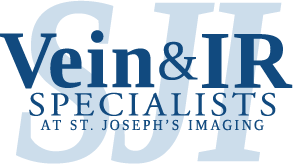What are Varicose Veins?
Varicose veins are enlarged veins that can be blue, red or flesh colored. They are often raised above the skin on legs and look like twisted bulging cords. Varicose veins occur when the valves in the veins that regulate blood flow direction from the legs toward the heart no longer function, causing blood to pool. Symptoms of varicose veins include pain, swelling, aching, throbbing, burning, cramping and heaviness.
At our office, patients are examined, and the proper vascular treatment is then prescribed and performed by the interventional team. Recommendations may be as simple as cosmetic improvements. Other patients may require complete endovenous ablation or vein removal (phlebectomy).
Endovenous Radiofrequency Ablation (RFA)
RFA is a minimally invasive procedure using segmental radiofrequency energy to provide an even and uniform heat to contract the collagen in the vein walls, causing them to collapse and seal the vein closed. Blood flow is then naturally redirected to healthy veins as the recovery process begins. The treated vein becomes scar tissue and is eventually absorbed by the body and blood is then re-routed through healthy veins back towards the heart. We do this without general anesthesia, sutures or down time. Your leg will feel relief within 24 hours.
Ambulatory Phlebectomy
A non-invasive procedure under local anesthesia to remove varicose vein branches by micro-extraction technique. Tiny incisions are made in the skin through which the remaining varicose veins are removed. The incisions are so small they do not require stitches, and often heal without scarring. It is performed as a second stage to the RFA treatment or when there are isolated varicose veins. Patients can return to their normal activities the day after treatment.
After The Treatment
After the treatment, compression stockings can be worn to help with healing and decrease swelling for the following two weeks. You may resume normal activity after the treatment but no strenuous or heavy lifting for up to two weeks. Mild soreness may last up to ten days. A follow-up ultrasound will be scheduled two weeks after treatment.
Prospective patients must complete a survey to determine their eligibility for treatment:
